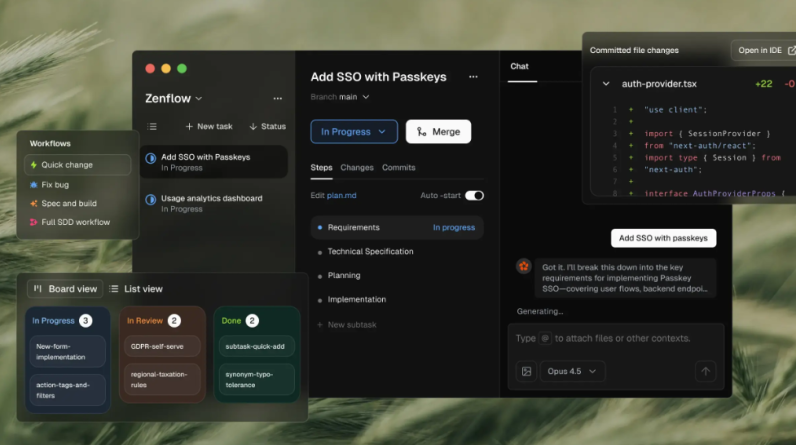
Artificial intelligence (AI) is transforming the media and communication landscape at an unprecedented pace. From automated content generation to data-driven audience analytics, AI-powered tools are reshaping how information is created, disseminated, and consumed. As media industries rapidly evolve, universities face the challenge of equipping future communication professionals with the necessary AI-driven skills to remain competitive in the workforce. This transformation demands a rethinking of traditional media education, with a strong emphasis on integrating AI literacy, practical applications, and ethical considerations into academic programs.
Recognizing the urgency of this shift, the study Comparative Analysis of AI Integration in Media and Communication Curricula: Case Studies From Australia and Egypt, authored by Muhammad Asim Imran and published in the Journalism & Mass Communication Educator, provides an in-depth analysis of how universities in these two countries are responding to the AI revolution. By systematically reviewing course structures, curriculum guides, and teaching methodologies, the research identifies key trends in AI adoption, disparities in educational approaches, and the challenges institutions face in preparing students for AI-driven media environments. The study underscores the growing necessity for AI literacy in journalism and communication programs, stressing that failure to integrate AI-related skills could leave graduates at a disadvantage in an increasingly automated industry.
The role of AI in modern journalism and communication education
The rapid advancement of AI has revolutionized journalism, digital storytelling, and audience engagement. AI-driven tools such as natural language processing, machine learning algorithms, and automated content curation have become integral to media organizations. In response, educational institutions must ensure that students acquire competencies in data analytics, algorithmic decision-making, and ethical considerations of AI use.
This study explores how AI is embedded within the curricula of the University of Melbourne and the University of Sydney in Australia and compares them with Cairo University and the American University in Cairo (AUC) in Egypt. While Australian universities have begun integrating AI-related modules into their media courses, Egyptian institutions face challenges related to infrastructure, faculty expertise, and funding constraints. These differences underscore the varying degrees of readiness for AI integration in higher education systems.
Comparative insights: AI curriculum in Australia vs. Egypt
The research reveals a stark contrast between Australian and Egyptian universities regarding AI adoption in media education. Australian universities benefit from a robust digital infrastructure, enabling them to incorporate AI-driven coursework, including practical applications such as AI-powered journalism tools and media analytics. In contrast, Egyptian universities have a more traditional approach, focusing on theoretical media studies without significant emphasis on AI and automation.
The study identifies key gaps in Egyptian media curricula, particularly the lack of AI-specific courses, insufficient hands-on training with AI tools, and a shortage of faculty with AI expertise. Meanwhile, Australian universities are pioneering AI-enhanced content creation, audience analytics, and digital marketing strategies, preparing students for the evolving demands of the media industry. However, both countries face the challenge of ensuring ethical AI implementation, addressing concerns such as bias, misinformation, and data privacy.
The need for AI literacy in media education
As AI-driven technologies become mainstream in media and communication industries, universities must adapt by integrating AI literacy into their curricula. The study emphasizes that AI proficiency is no longer optional for journalism graduates – it is essential for their employability and competitiveness in a tech-driven job market.
The research recommends that universities implement AI courses focusing on algorithmic journalism, AI ethics, content automation, and audience analytics. Furthermore, cross-disciplinary collaboration between media faculties and AI researchers could enhance the curriculum by providing students with hands-on exposure to real-world applications. Industry partnerships could also play a crucial role in offering students internships and research opportunities to engage with AI-driven media innovations.
Future directions in AI and media education
To bridge the existing gaps in AI education, universities in both Australia and Egypt must prioritize curriculum enhancements that align with global industry trends. The study advocates for customized AI training programs, faculty development initiatives, and investments in digital infrastructure to support AI integration in media education.
For Australian institutions, the focus should be on expanding interdisciplinary AI-media courses and fostering ethical AI practices in journalism. Meanwhile, Egyptian universities need to address resource limitations by seeking government and industry support to implement AI-focused curricula.
By proactively adapting to AI advancements, higher education institutions can equip future media professionals with the skills needed to thrive in an AI-driven world. This study highlights the pressing need for universities to evolve their teaching methodologies to keep pace with technological disruptions, ensuring that graduates remain competitive and well-prepared for the future of media and communication.






